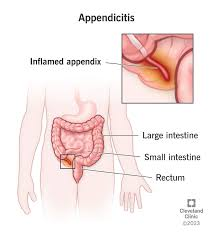How can the nurse determine that the outcomes of nursing interventions have been successful for the client diagnosed with a sickle cell crisis? (SELECT ALL THAT APPLY)
The client is free of chest pain and dyspnea.
The client describes the importance of increasing fluid intake.
The client increases aerobic exercises to promote endurance.
The client's acute pain is controlled at 3 on a standard pain scale.
Correct Answer : A,B,D
Choice A reason:
Being free of chest pain and dyspnea is a significant indicator of successful nursing intervention in a sickle cell crisis. Chest pain and dyspnea can occur due to acute chest syndrome, a life-threatening complication of sickle cell disease characterized by vaso-occlusion in the pulmonary microcirculation. Effective pain management and oxygen therapy can alleviate these symptoms, reflecting improved respiratory function and gas exchange.
Choice B reason:
Educating the client on the importance of increasing fluid intake is crucial in managing sickle cell crisis. Adequate hydration helps to reduce blood viscosity and prevent sickling of red blood cells, which can lead to vaso-occlusive episodes. When a client verbalizes understanding and the importance of hydration, it demonstrates the effectiveness of patient education and the client's engagement in self-care.
Choice C reason:
While increasing aerobic exercises may promote endurance, it is not typically a short-term outcome measure for a sickle cell crisis. Exercise must be approached with caution in these clients, as it can increase the risk of a vaso-occlusive crisis due to dehydration and increased oxygen demand during a sickle cell crisis.
Choice D reason:
Control of acute pain to a level of 3 on a standard pain scale indicates successful pain management, a primary goal in the treatment of sickle cell crisis. Pain in sickle cell crisis is due to ischemia from obstructed blood flow by sickled cells. Effective analgesic administration and pain management strategies are essential to achieve this outcome.
Choice E reason:
A leukocyte count of 18,000/mm³ is above the normal range (4,500 to 11,000/mm³) and may indicate an infection or inflammation, which are common complications of sickle cell disease. However, this is not a direct outcome of nursing interventions aimed at managing a sickle cell crisis and thus is not a correct choice.
Nursing Test Bank
Naxlex Comprehensive Predictor Exams
Related Questions
Correct Answer is C
Explanation
Choice A Reason
Monitoring for hypoglycemia at 1200 is not optimal because it is well past the peak action time of insulin aspart, which occurs approximately 45–90 minutes after administration. By noon, the insulin's effects are waning, and the risk of hypoglycemia is lower compared to the peak action period.
Choice B Reason
Monitoring at 1000 might still catch the tail end of the peak action time, but it is not the most likely time for hypoglycemia to occur. The nurse could miss the initial signs of hypoglycemia if monitoring starts two hours after administration.
Choice C Reason
0900 is the most appropriate time for the nurse to monitor for hypoglycemia. Insulin aspart has a rapid onset of action, peaking in about 45–90 minutes, and the effects last for 3–5 hours. Monitoring one hour after administration aligns with the start of the peak action time, when hypoglycemia is most likely to occur.
Choice D Reason
Monitoring at 1100 is less ideal because it is nearing the end of the peak action period. While there is still a risk for hypoglycemia, the highest risk would have been earlier, closer to the peak action time.
Correct Answer is C
Explanation
Choice A reason:
Offering a warm beverage to a client with suspected appendicitis is not advisable. Preoperative clients are typically required to have an empty stomach to reduce the risk of aspiration during anesthesia. Introducing fluids or food could delay surgery and increase the risk of complications.
Choice B reason:
Monitoring the client's gag reflex is not a priority in the care of a client with suspected appendicitis. The gag reflex is more relevant in neurological assessments or when evaluating swallowing function, not in the context of appendicitis.
Choice C reason:
Helping the client to a side-lying position with knees flexed can provide comfort and may help relieve abdominal pain. This position reduces tension on the abdominal muscles and can be a supportive measure while the client awaits surgery.
Choice D reason:
Applying a heating pad to the abdomen is contraindicated in clients with suspected appendicitis. Heat can cause the appendix to rupture, leading to peritonitis, which is a severe and potentially life-threatening complication. Therefore, this action should be avoided.

Whether you are a student looking to ace your exams or a practicing nurse seeking to enhance your expertise , our nursing education contents will empower you with the confidence and competence to make a difference in the lives of patients and become a respected leader in the healthcare field.
Visit Naxlex, invest in your future and unlock endless possibilities with our unparalleled nursing education contents today
Report Wrong Answer on the Current Question
Do you disagree with the answer? If yes, what is your expected answer? Explain.
Kindly be descriptive with the issue you are facing.
